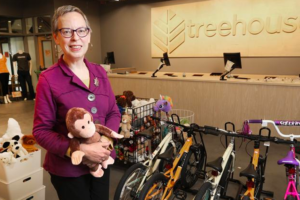In 1988, a group of Washington State Department of Social and Health Services social workers grew tired of seeing the deprivation often faced by children in foster care. They started purchasing the little things needed to help foster children feel loved and capable — things like birthday presents and school supplies — funded by community bake sales and car washes.
Over time, Treehouse grew to become a strong and thriving nonprofit providing valuable programs — all with the goal of supporting successful completion of high school for students in foster care.
But in 2012, the organization faced the harsh reality that — despite its efforts — fewer than 50 percent of youth in foster care were graduating from high school.





